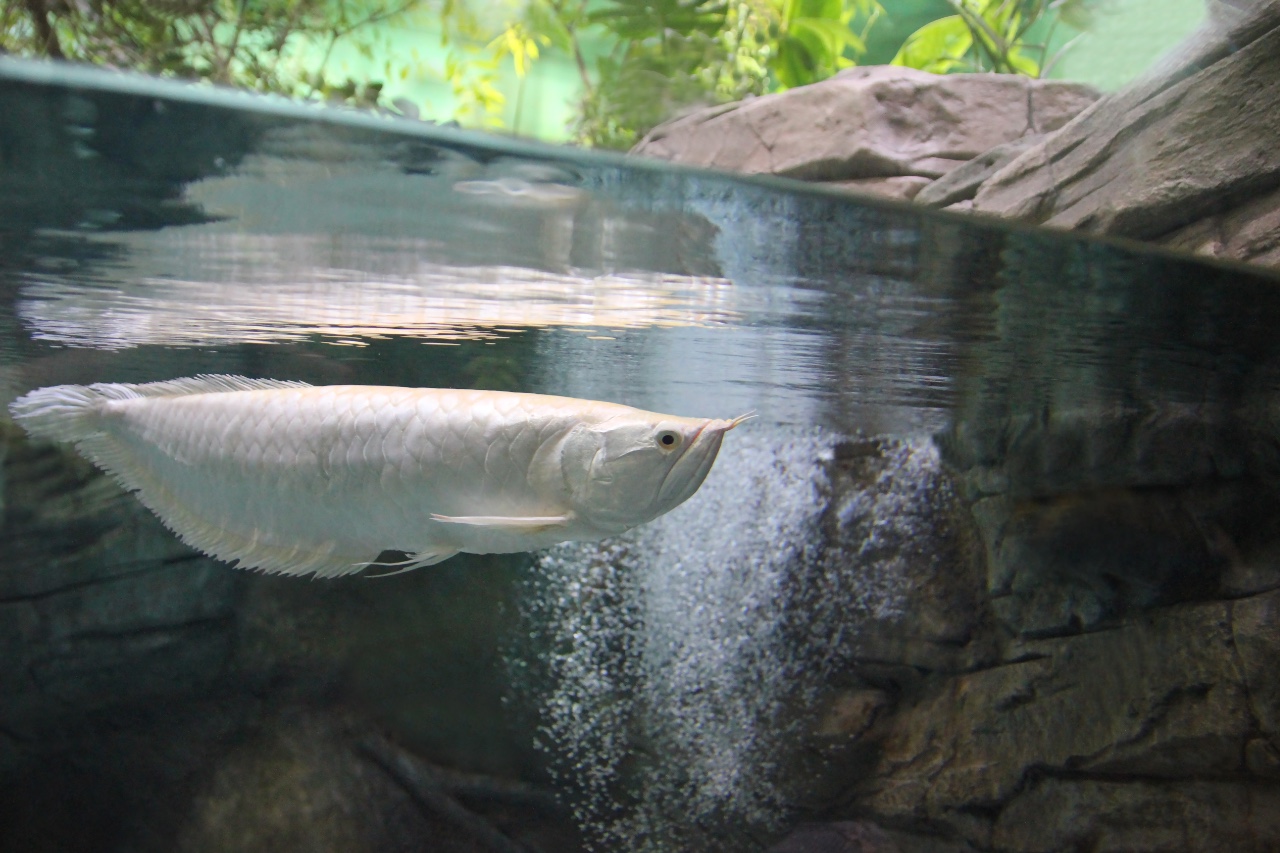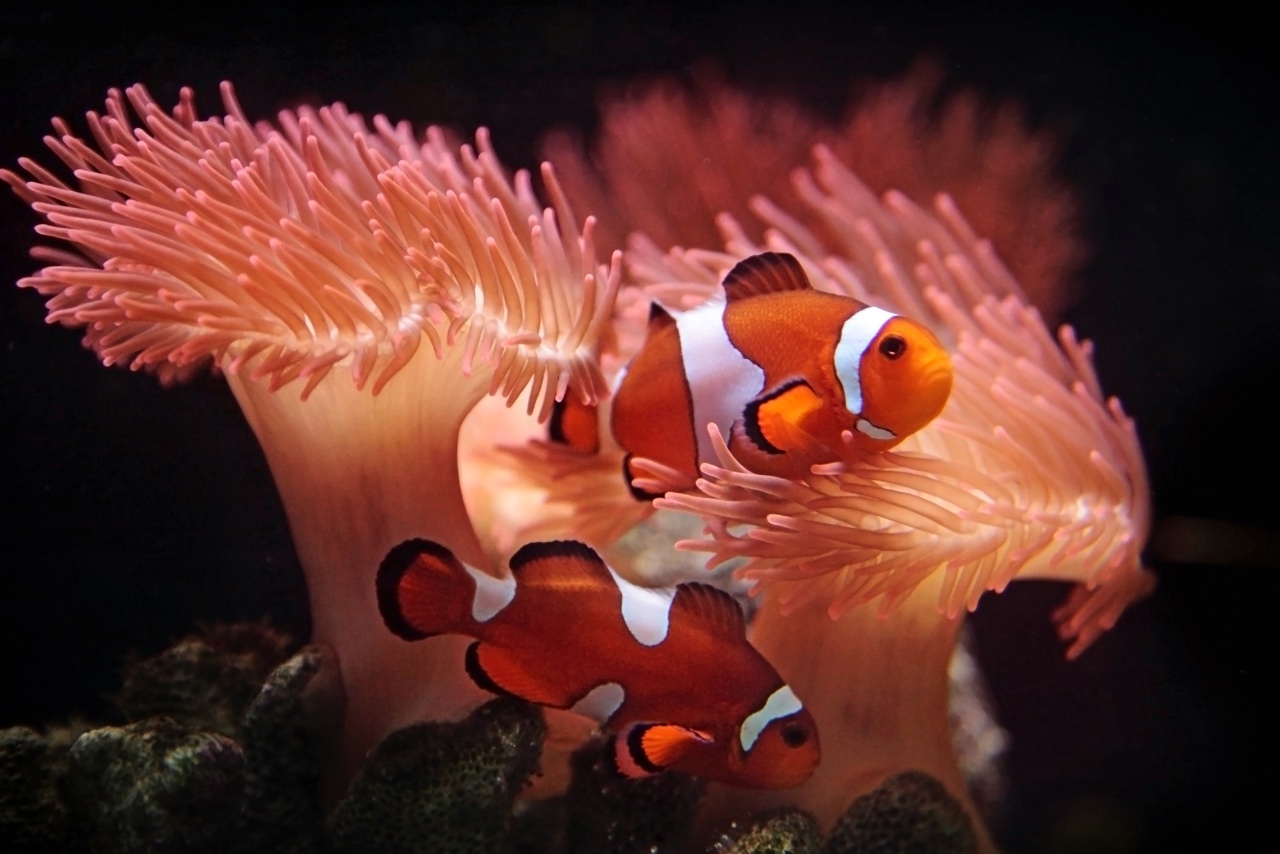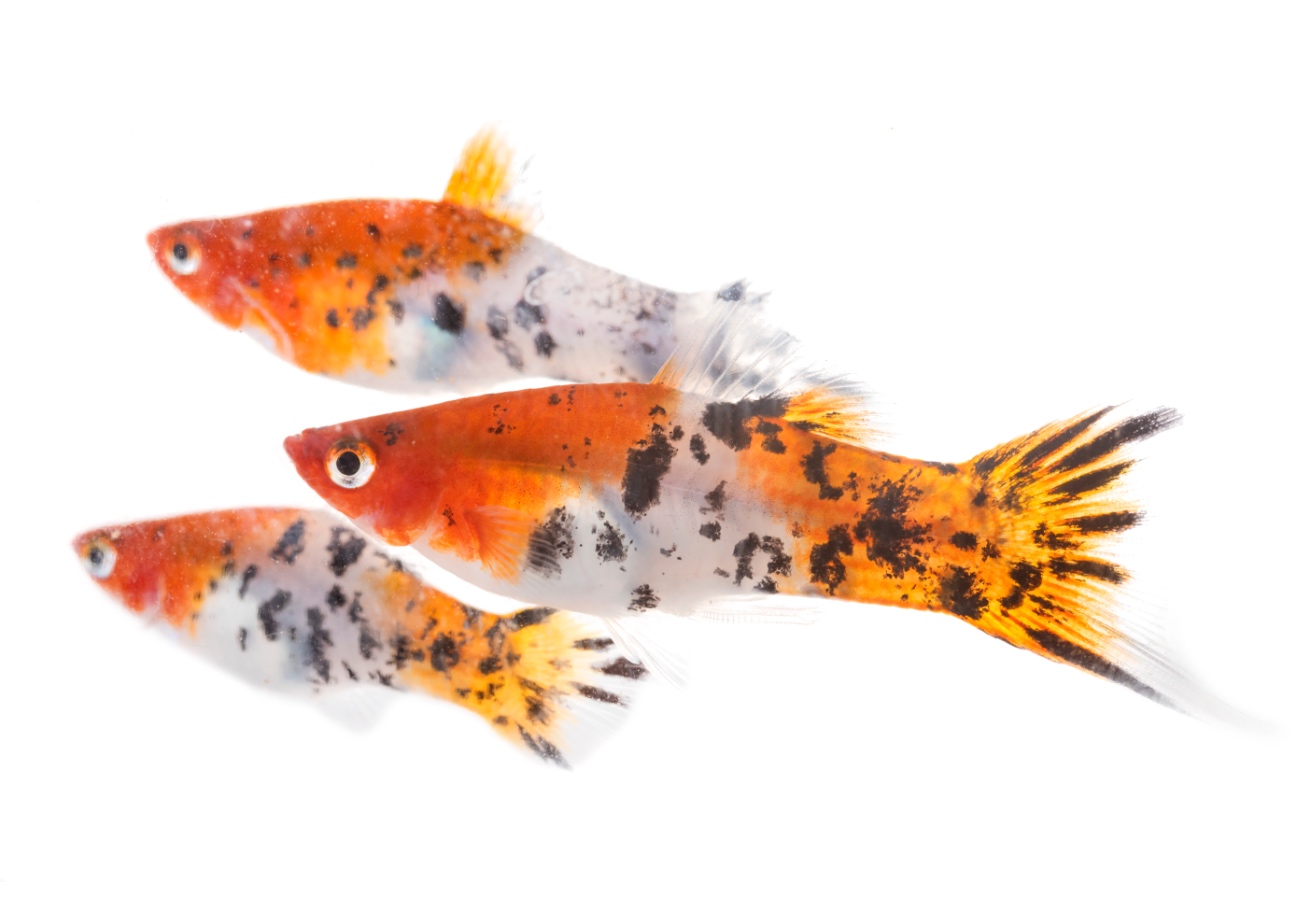Siamese Algae Eater is another breed of peace-loving freshwater fish. Most people look for a breed of non-aggressive fish to add to their community tank. Some fishes just add vividness with their colorful appearances, while others play a role in maintaining the tank.
As the name suggests, the Siamese Algae Eater is a fish that feeds on algae. The Algae Eaters look busy scavenging for food in the tank, and their active movements are another reason for their popularity.
These fish are quite hardy and easy to feed. Their appearance resembles that of another species, the Siamese Flying Fox. People often confuse them with this species.
If you also get confused and want to know more about them, keep reading this article until the end. Because we are going to cover everything in detail. Before that, let us take a look at the table given below –
| Category | Rating |
|---|---|
| Family | Cyprinidae |
| Scientific Name | Crossocheilus Oblongus |
| Diet | Omnivore |
| Temperament | Peaceful |
| Care Level | Easy |
| Color Form | Gold/Grey with Black Stripe |
| Size | 6 inches |
| Lifespan | Up to 10 Years |
| Compatibility | Peaceful Community Fish |
Siamese Algae Eater Overview

Siamese Algae Eater, a native of Southeast Asia, is mainly found in freshwaters of Thailand and Malaysia. But with the aquarium trade, they are now available around the globe. Talking about their family, they are closely related to carp.
They are quite active and considered the best Algae Eaters. Their active movement makes them interesting to look at, and with these active movements, they can quickly cover the whole tank.
They are quite popular, and you can find them in any store. They are easily purchased for $3-5 per fish, which makes them affordable as well. All these qualities make them perfect for beginners.
The Siamese Algae Eater is also easy to feed. You can add variety to their diet, which causes them to produce waste like other fish. They can be kept in both large groups and small groups, but overcrowding them isn’t a good idea. They will create a mess instead of keeping the tank clean.
Siamese Algae Eater Behavior
Siamese Algae Eaters are peaceful but quite active. They are bottom dwellers and are often seen scavenging for algae. When found, they sit there and feed on it until it is completely gone.
If they are in a group, they will move and feed together. Their movements can disturb other calmer fishes.
They aren’t aggressive, but if you see them show aggression, keep an eye on them. If their behavior doesn’t change, separate them from the rest for a few days.
Siamese Algae Eater Appearance
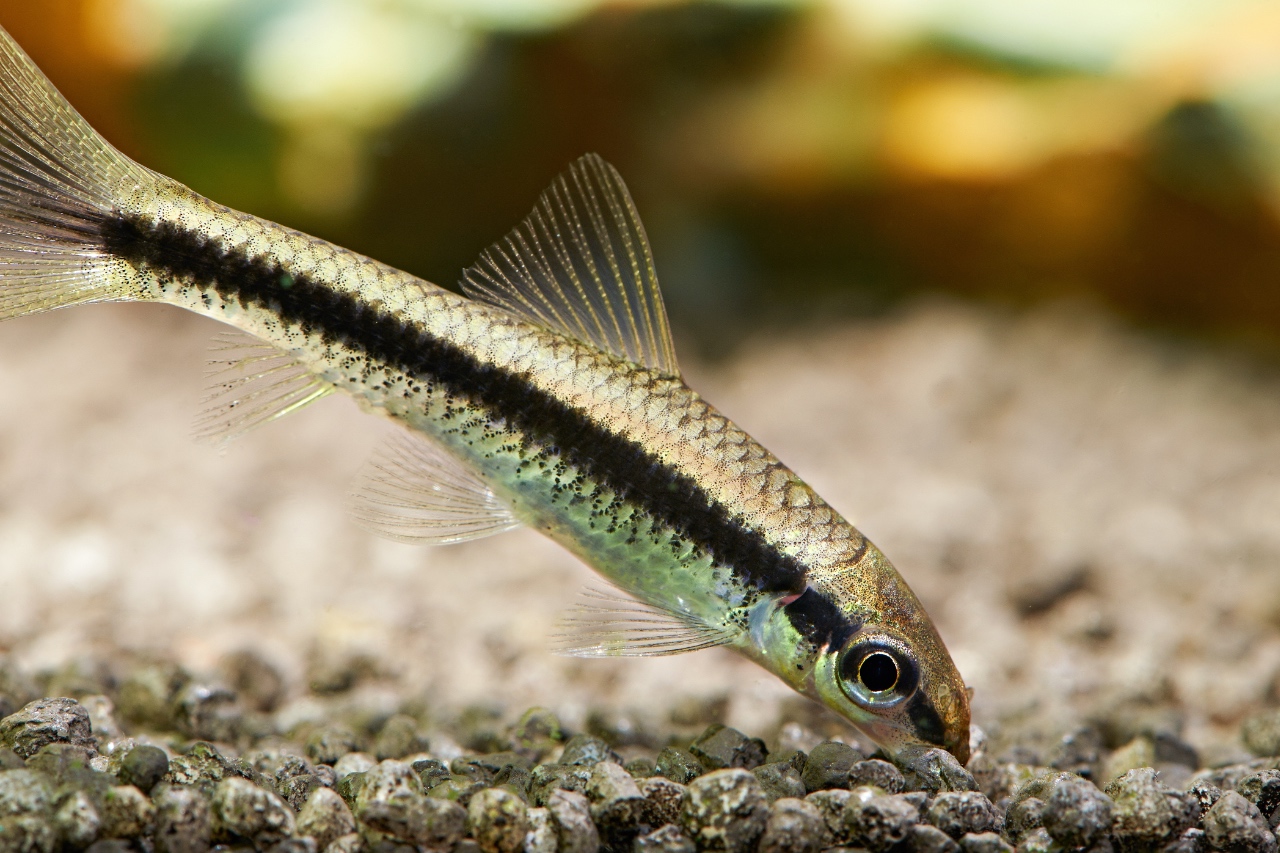
Siamese Algae Eaters don’t have any vivid or colorful appearance, but they still look attractive in their shiny steel-like body. The true breed of Siamese Algae Eaters has a pale grey or gold coloration on its long, narrow body.
They also have black strips that fade away when they feel threatened or during mating. The fading strips can also be the result of stress. The juvenile male and female cannot be distinguished.
Their appearance changes when they are 3-4 years old. The female Siamese Algae Eater grows bigger in mass than the male Siamese Algae Eater, and they can be easily distinguished from this.
Siamese Algae Eater vs Flying Fox

Both the Siamese Algae Eater and the Siamese Flying fox have a bold black stripe running from head to tail on their bodies. This makes them look similar, and people easily get confused with them.
But the flaps in the corner of their mouth make them different. Siamese Algae Eaters don’t have them, whereas Siamese flying fox has. It is the easiest way to distinguish them, but it is not easy to check their active movements in the tank.
Another thing you can do to find out the difference is to check the coloration and pattern. Siamese flying fox has a smooth black strip on the back of their body stretching till the start of their tail fin. In contrast, the black strips on Algae Eaters are not uniform and reach the end of the tail fin.
Siamese Algae Eater Tank Conditions and Habitat
As we always say, the tank setup should be similar to the fish’s natural habitat. It will make them comfortable, and they will thrive. Siamese Algae Eaters, as we already mentioned, belong to the rivers and streams of Southeast Asia.
In these waters, the flow is light, and the water is slightly acidic. The bottom surface of these water bodies is covered in heavy plantations, logs, and rocks. They provide food and shelter to them. These conditions match the preferences of their close relative, Asian Carp.
They are bottom dwellers, so they spend most of their time either in hiding or searching for food in their known corners. The water conditions needed for them to make the tank comfortable for them are as follows:
| Conditions | Parameter |
|---|---|
| Tank Setup | Heavily planted freshwater aquarium |
| Minimum Tank Size | 20 Gallons per fish |
| Temperature | 75-79°F |
| pH | 6.5 and 7.0 |
| Hardness | 5-20 dH |
The tank capacity for these Algae Eaters should be at least 20 gallons, and you can add 10 gallons per fish addition. To replicate their natural habitat, make sure to cover the bottom of the tank with heavy plantations, driftwood, rocks, and caves.
If they can’t find anything to eat, they can be seen nibbling plants, so a fast-growing and hardy plant like Hornworts will be perfect. The substrate should be sand, or they will get scratched everywhere while searching for food.
You can attach a heater to maintain the given temperature and a filter to keep the water cycling. The filter will make the water move slowly, which they prefer.
Another thing to keep in mind is to close the tank lid firmly. Siamese fishes are bottom dwellers but are quite active as well. Jumping out of the water in excitement is not something that will surprise you.
Siamese Algae Eater Tank Mates
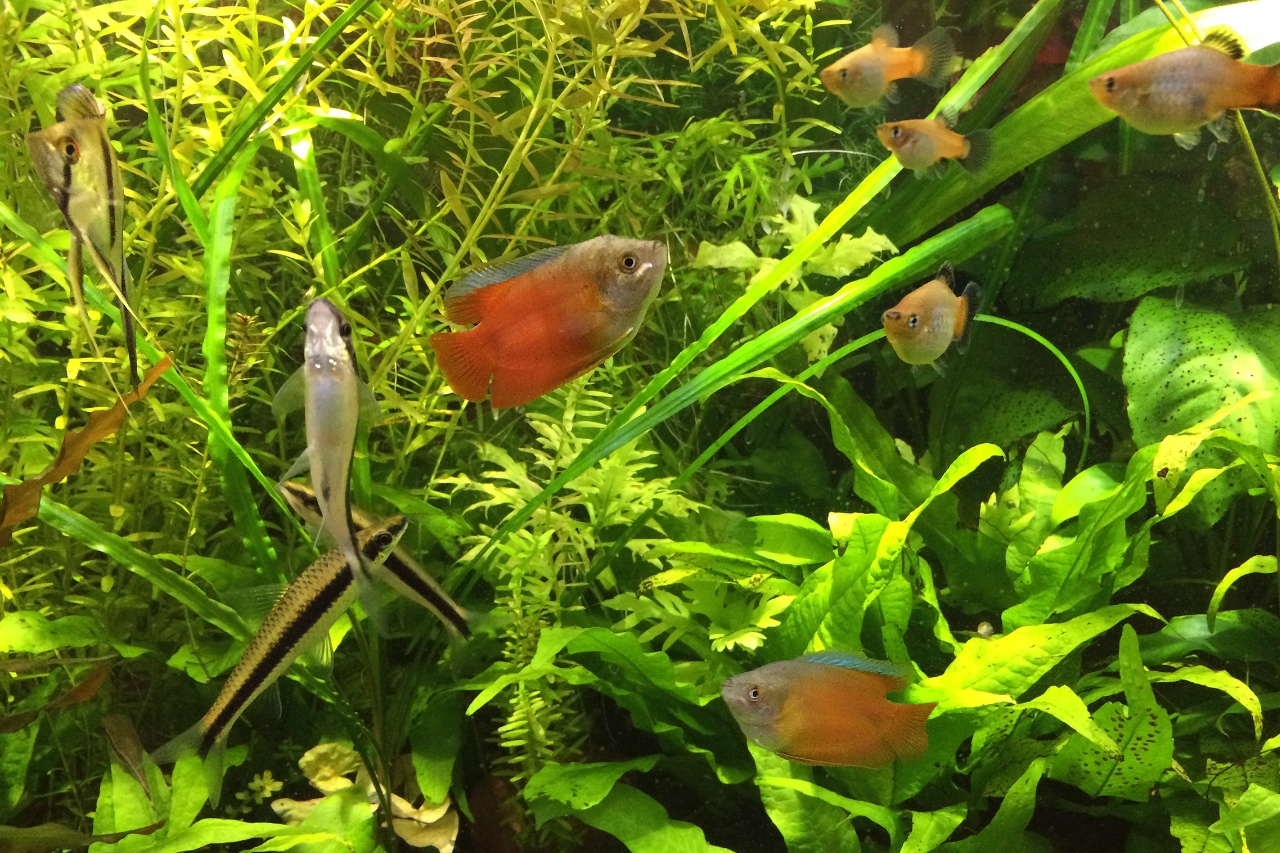
Siamese Algae Eater is a non-aggressive fish that can easily be kept in any community tank. You can find a long list of fish you can add to your tank with these Algae Eaters.
Danios, tetras, and guppies are other examples of non-aggressive community fishes. They are especially famous for their small size. Talking about size, you should avoid any bigger size fish to avoid Algae eaters becoming their lunch.
But there are some fishes like gourami and barbs that are big but are quite peaceful and won’t hurt your Siamese Algae Eater. In contrast, aggressive fishes like Cichlids are not at all recommended. They will not only attack your Algae Eater but will bite them or swallow them if given a chance, except for Angelfish.
Bottom dwellers are usually territorial, like a Red Shark, but some species can live peacefully without fighting for territory. This includes the Corydoras genus, which includes a variety of fish. They are all bottom dwellers, and none of them are territorial.
You can also add the fish that live on different levels to make the tank look active and not cross anyone’s way. To add variety and activity, you can also add non-fish creatures like snails and shrimp.
You can add different species of shrimps like Cherry, Amano, And Ghost Shrimps, and for snails, you can add Nerite Snails. They, too, are Algae Eaters, but their behavior is quite different from Siamese Algae Eaters. So, their presence will add variety to the tank.
How to Keep Siamese Algae Eaters Together?
The Siamese Algae Eaters are at their best when kept in a school of 4-6 fishes. You will see different behaviors among them. But this should not encourage you to overstock your tank.
Keeping single or pairs of Siamese Algae Eaters will not affect their growth or behavior much. So, stock only a limited number of fish according to your tank capacity.
Siamese Algae Eater Diet
Feeding Siamese Algae Eaters is not a huge task, just like other Algae Eaters. They scavenge for food and would eat anything from plant debris to dead fish. So, you can feed them with a variety of food from premade or homemade to live or frozen food.
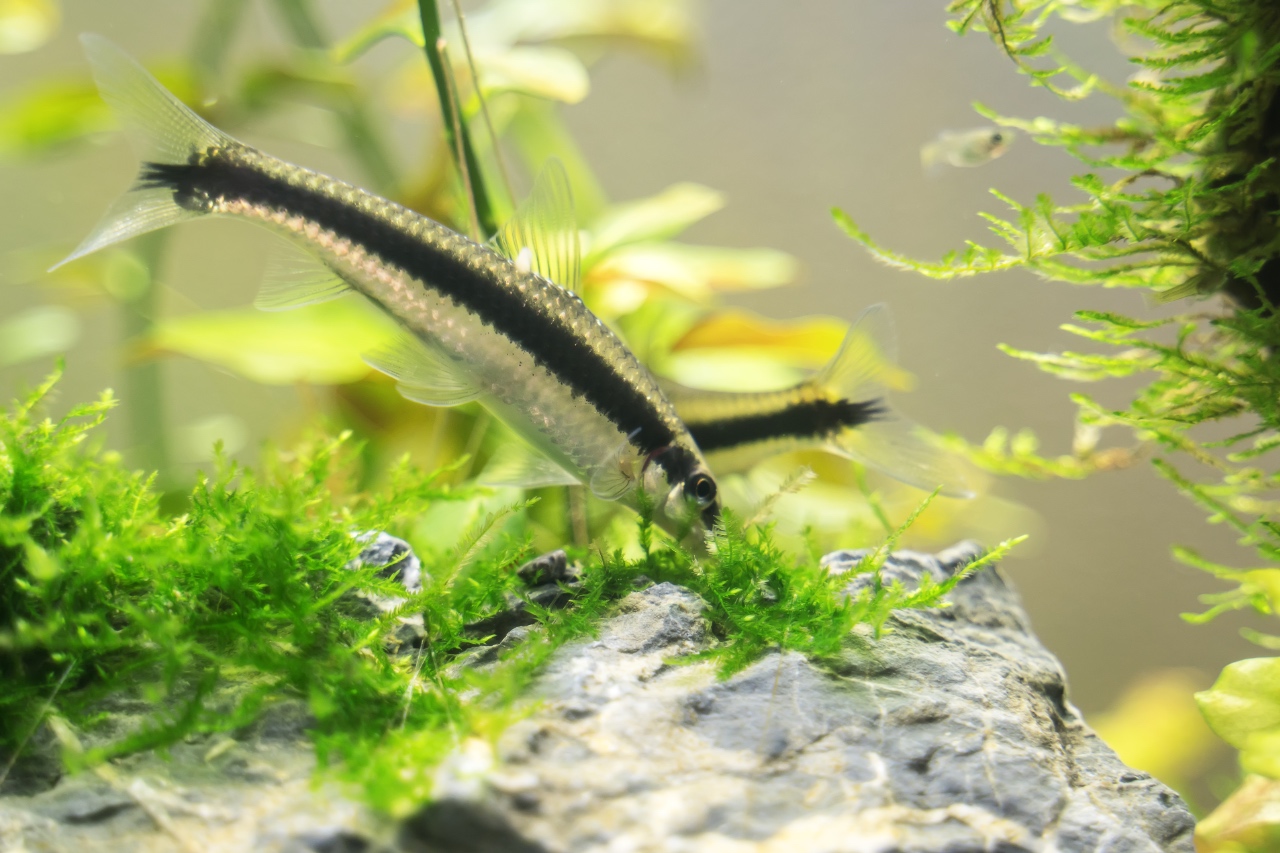
You can feed them vegetables and sinking pellets or flakes from the store as the base diet of these Algae Eaters is not meat. But you should feed them brine shrimps or bloodworms to maintain variety and avoid nutrient deficiency.
They feed on algae, so it is easy to overfeed them. If given a chance, they can eat the whole day, but it is not good. It can risk their health, and they will also stop eating algae. So, make sure to feed only a small amount of food that they can finish in a couple of minutes and not more than that.
Siamese Algae Eater Care
Siamese Algae Eaters don’t have any species-specific disease, but they can still catch commonly found diseases of freshwater fishes. Ichthyophthirius multifiliis, or ‘ich’ parasite, is very common among these fishes.
This parasite gets into their body and infects them. The common symptom includes white dots around the fish’s body.
Most diseases can be cured by medication, but only if diagnosed at the right time. So, it is important to keep an eye on them and look for any changed behavior or activity. If you see anything, then isolate them to save other fish.
Precaution is another way to keep your Siamese Algae Eater safe from disease. The precaution includes –
- Properly clean the tank every two weeks.
- Maintaining water conditions and changing only 25% of water.
- Only purchase high-quality food from a certified store.
- Check the ingredients before adding anything to the tank.
- Wash and sanitize any decorative material or equipment before adding them to the tank.
- Check for symptoms before adding a new fish to the tank.
Siamese Algae Eater Breeding
Siamese Algae Eaters breed in the same way as other fish, but breeding these fish takes a lot of effort. There are ways to breed them in farms using hormones, but it can only be done by or in the presence of an expert.
The gender of the fish can be easily known by looking at their size, but a beginner or even an expert cannot mate them in the aquarium. Spawning may need a change in water conditions, but no one can tell it accurately. Very little is known about breeding them in the aquarium.
Summary
Siamese Algae Eaters are quite active and clean the tank efficiently. They are peaceful and have many other qualities that make them perfect for beginners to start their hobby of fishkeeping.
Healthy food and an accurate tank setup are all they need to thrive in the tank. They are easy to feed and care for but not as easy to breed. So, you can do everything effortlessly except breeding them in the aquarium. Their simplicity and active movements will keep your tank interesting.
Did you keep Siamese Algae Eaters in your tank, or are you planning to have one? What do you think about them? Let us know in the comments.

